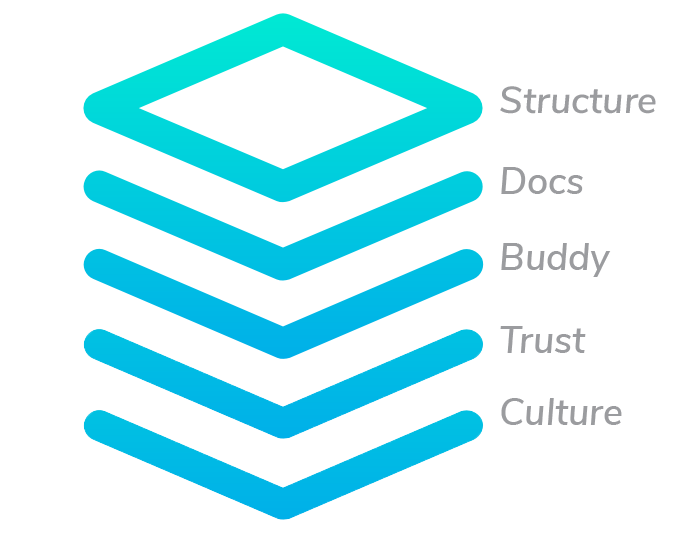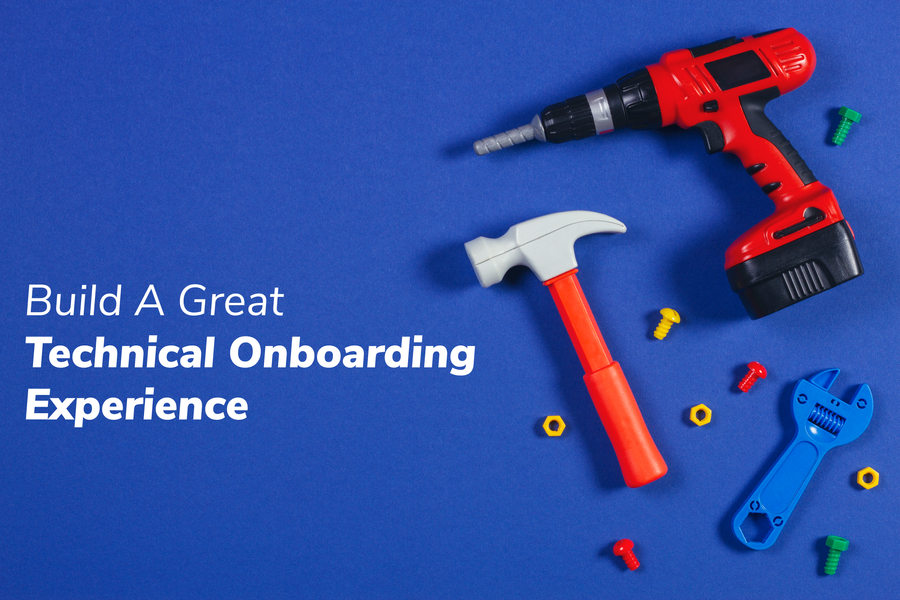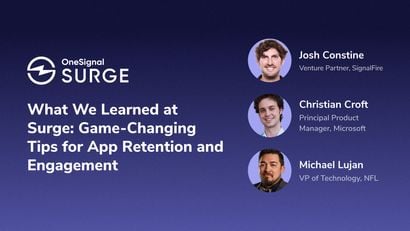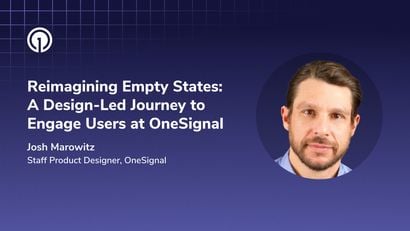With COVID-19, remote work has become increasingly predominant to ensure the health and safety of our colleagues and communities. Here at OneSignal, we are continuing to hire and expand our team in spite of these new challenges. Now more than ever, creating a seamless and remote-friendly onboarding experience has become a priority.
In this post, we'll discuss the key components of our technical onboarding process that we've developed for remote work in the age of COVID-19. We hope these best practices are useful to the broader engineering community as many businesses adapt to this new paradigm for work.
A Great Technical Onboarding
What constitutes a great technical onboarding? While the bits and bytes will differ based on the company and its culture, here's what works well for us at OneSignal.

Utilize Structure to Facilitate Learning
A core part of our onboarding experience is the 14/45/90 day plan. New hires receive this plan in their welcome packet and it guides them through focus areas for the first 14, 45, and 90 days on the job. Our engineering managers author and review the plan prior to the start date of new hires.
While the 30/60/90 day format for onboarding plans might be a bit more familiar, we opted for the 14/45/90 day format to provide a higher level of detail earlier on in the process. We find the first couple weeks on the job can come with the most ambiguity and uncertainty, and we endeavor to minimize that as soon as possible.
The 14/45/90 day plan is consistently one of the most highly rated parts of our technical onboarding process.
"One of my favorite parts of onboarding was my 14/45/90. It gave me clear goals and priorities without being overly formal."
– Newly onboarded engineering manager
Provide Accessible & Up-to-date Documentation
Documentation should be easy to find, relevant, informative, and easy to update.
At OneSignal, we utilize a few different documentation tools:
- Readme for less frequently updated company process documents
- Github hosts our source code, so naturally it is utilized for READMEs and design reviews
- Dropbox Paper for all other engineering documentation such as setup guides, runbooks, style guides, and so on.
To encourage the team to keep documentation fresh, all engineering managers subscribe to updates to setup guides so they can signal boost the good work of keeping our docs up-to-date.
Pair with a Buddy
For topics outside the scope of the 14/45/90 day plan and our standard documentation, the next available resource is the buddy!
Each engineer is paired with a buddy on their immediate team – someone that they can approach first with questions. We highly encourage pair programming in general but especially during onboarding with your buddy.
A proactive buddy is a good buddy! We encourage our teammates to keep an open dialog with each other, and have seen positive results in building rapport as a result.
I liked the active buddy system, where my buddy was actually reaching out to me to see if I have any questions or challenges, instead of the other way around.
– Newly onboarded engineer
Establish Trust
Building and establishing trust with your direct manager is an important component to success in a remote and often asynchronous working environment.
As an engineering management team, we endeavor to catalyze this relationship building by being selfless, available, and generally subscribing to the servant leadership mindset.
We work to establish career goals and map those goals to our internal career progression framework, often codifying those objectives in our Objectives and Key Results (OKR) framework.
Build Culture through Multiple Mediums
Last but not least, we want to educate our new teammates around our cultural values. At the same time, we want to remain open-minded and we recognize that new people bring new ideas to the table. These ideas can help us evolve and iterate on our culture.
To that end, we have many different forums where we can socialize and discuss our culture – from regular brown bag lunches, to all-hands, and virtual happy hours. For example, we recently held a brown bag on the ACM/IEEE Software Engineering Code of Ethics.

It Takes a Village
A great technical onboarding is only a part of the story. SignalFire recently released a guide to distributed team management where they highlight three components to a successful onboarding: Organizational, Cultural/Social, and Technical.
At OneSignal, we have a world-class operations team that takes the organizational and cultural components of onboarding very seriously. Together, we make certain our new teammates are successful.
To name just a few components of our process, the first couple weeks with OneSignal will typically include:
- A welcome email from our operations team ✉️
- A welcome meeting with our operations team 😎
- A welcome lunch 🥗
- A pre-defined schedule for your first day, including 1:1s with your immediate team 📅
- Company all-hands ✅
- Game nights 🎮
- Company history lesson with our co-founders 📚
We're Still Growing
If you've made it this far, thanks for reading! We hope this post helps to inform some of your company's onboarding practices and improves the experience for both new hires as well as your team.
OneSignal is continuing to search for excellent software engineers and managers to join our team. Find out more on our careers page by clicking the button below.
Join our Team!



